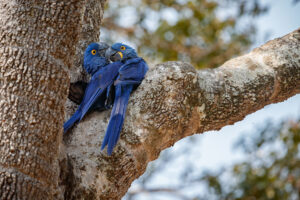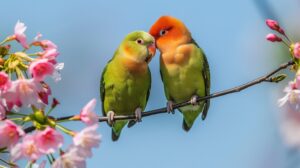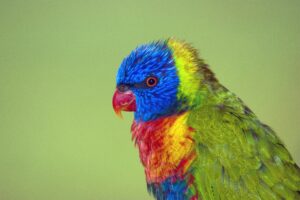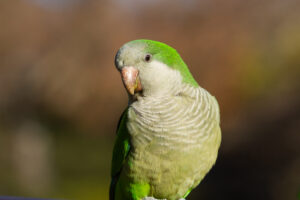Introduction
The pineapple conure green cheek is one of the most visually striking pet birds available today. With their warm cinnamon-colored bodies, bright yellow undersides, and emerald-tinted wing feathers, these stunning mutations of the green cheek conure have captured the hearts of bird enthusiasts nationwide. But before you rush to add one of these vibrant companions to your home, it’s crucial to understand that the pineapple conure green cheek isn’t the right pet for everyone.
As a color mutation of the traditional green cheek conure, the pineapple green cheek conure carries both the beautiful aesthetics that draw people in and the complex care requirements that catch many unprepared owners off guard. While these birds offer incredible companionship, their specific needs make them unsuitable for certain households and lifestyles.
In this comprehensive guide, we’ll explore the four main reasons why a pineapple conure green cheek might not be your ideal pet, along with detailed information about their care, personality, diet, and more. Whether you’re seriously considering bringing a pineapple conure into your life or simply curious about these colorful companions, this article will provide essential insights to help make an informed decision.

What Is a Pineapple Conure Green Cheek?
Before diving into why these birds aren’t for everyone, let’s clarify exactly what a pineapple conure green cheek is. The pineapple conure is not a separate species but rather a color mutation of the green cheek conure (Pyrrhura molinae). The standard green cheek conure features predominantly green plumage with gray chest feathers, a maroon tail, and dark gray facial feathers.
The pineapple green cheek conure mutation, developed through selective breeding, displays distinctive coloration:
- Cinnamon-colored body plumage instead of green
- Bright yellow chest feathers instead of gray
- Yellow to orange belly
- Lighter facial coloration
- Yellow-tinged flight feathers
Among green cheek conure color mutations, the pineapple variant is particularly popular due to its warm, tropical appearance that resembles the fruit it’s named after. Other common green cheek mutations include turquoise, yellow-sided, and cinnamon, each with their own distinctive color patterns.
Understanding that the pineapple conure is essentially a green cheek conure with different coloring is important—their care requirements and behaviors are fundamentally the same as standard green cheeks. However, their striking appearance often drives higher demand and prices in the pet market.
Reason 1: Noise Levels Can Be Challenging
One of the primary reasons a pineapple conure green cheek might not fit into every home is their vocal nature. While the pineapple conure noise level is generally considered moderate compared to larger parrot species like macaws or cockatoos, these birds are far from silent companions.
Understanding Pineapple Conure Vocalizations
The pineapple green cheek conure communicates through various sounds:
- Sharp, high-pitched contact calls
- Chattering and mumbling sounds
- Screeching when excited or alarmed
- Whistling and mimicking household sounds
These birds typically vocalize most actively during morning and evening hours, coinciding with wild flocking behaviors. However, a bored, lonely, or stressed pineapple conure may screech persistently throughout the day, creating significant noise disruption.
Green cheek conures, including the pineapple mutation, are often marketed as “quieter parrots,” but this is relative. They’re certainly less ear-splitting than sun conures or Amazon parrots, but they can still produce sounds that carry through apartments or startle sensitive individuals.
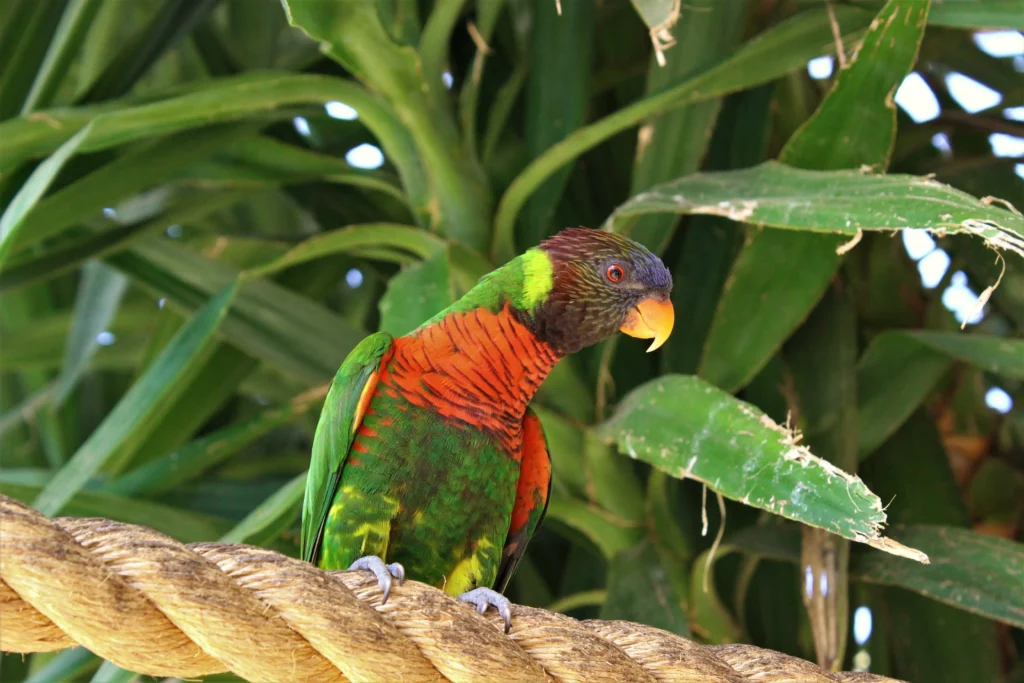
Pineapple Conure Talking Ability
When it comes to the pineapple conure talking ability, owners should maintain realistic expectations. Unlike some larger parrots with extensive vocabularies, pineapple green cheek conures typically:
- Learn a limited vocabulary of 5-15 words
- Speak with a scratchy, less clear voice compared to African greys or Amazon parrots
- May prefer mimicking sounds over learning words
- Show significant variation in speaking ability between individuals
Not every pineapple conure will speak at all. Some remain purely vocal with their natural calls, while others might surprise you with phrases or songs they pick up. If you’re specifically looking for a talking pet, there are better parrot choices than the pineapple conure green cheek.
For households with noise restrictions, such as apartments with thin walls, sensitive family members, or those who require quiet working environments, the pineapple conure’s vocalizations may become a significant source of stress rather than joy.
Reason 2: Time-Intensive Care Requirements
The pineapple conure green cheek demands substantial time commitment—a factor that makes these birds unsuitable for busy individuals or households with limited availability for pet care.
Daily Care Needs of Pineapple Conures
Proper pineapple conure care includes:
- Out-of-cage time: Minimum 2-4 hours daily of supervised freedom
- Social interaction: Direct engagement through handling, training, or play
- Feeding routine: Fresh food preparation twice daily
- Cage maintenance: Daily spot cleaning and weekly deep cleaning
- Environmental enrichment: Regular toy rotation and activity planning
These aren’t weekend pets that can be left with an automatic feeder. Green cheek conures, including the pineapple mutation, require daily attention to remain physically and psychologically healthy.
Pineapple Conure Training Commitment
Training a pineapple green cheek conure is an ongoing process that requires consistency and patience:
- Basic command training (step-up, step-down)
- Potty training (teaching them designated elimination spots)
- Social boundaries (appropriate biting inhibition)
- Trick training for mental stimulation
- Reinforcement of desirable behaviors
This training isn’t optional—it’s essential for developing a well-adjusted pineapple conure that integrates successfully into your household. The time investment is significant, especially during the first year of ownership.
Without adequate time commitment, pineapple conures can develop problematic behaviors including excessive screaming, feather plucking, aggressive biting, and destructiveness. These issues usually stem directly from insufficient attention or stimulation.
If your work schedule keeps you away from home for long hours, if you travel frequently, or if your family lifestyle is already overscheduled, the intensive care requirements of a pineapple conure green cheek may create stress rather than joy in your relationship with the bird.
Reason 3: Complex Dietary and Health Management
Maintaining optimal health for a pineapple green cheek conure requires nutritional knowledge and vigilant health monitoring that goes beyond what many casual pet owners might expect.
Pineapple Conure Diet Requirements
The best food for pineapple conure health includes a diverse, carefully balanced diet:
- High-quality pellets: Should constitute 60-70% of diet
- Fresh vegetables: Daily variety including leafy greens, carrots, sweet potatoes
- Limited fruits: Occasional treats rather than dietary staples
- Protein sources: Small amounts of cooked egg, legumes, or appropriate insects
- Healthy seeds/nuts: In moderation as treats or training rewards
Common dietary mistakes include overreliance on seed mixes (which are typically too high in fat), insufficient pellet conversion, or inadequate vegetable variety. The pineapple conure green cheek requires a diet as colorful as its plumage to obtain all necessary nutrients.
Food preparation for these birds takes time daily, as fresh foods must be properly washed, chopped, and served at appropriate temperatures. Additionally, understanding safe and toxic foods is crucial—many common household items like avocado, chocolate, and certain houseplants can be deadly to your pineapple conure.
Pineapple Conure Health Issues
These birds are susceptible to various health concerns requiring owner vigilance:
- Respiratory infections: Common in drafty or smoky environments
- Psittacosis: Bacterial infection that can transfer between birds and humans
- Feather plucking: Psychological or physical issue requiring veterinary investigation
- Vitamin A deficiency: Common with inadequate diet
- Fatty liver disease: From seed-heavy diets
- Intestinal parasites: Requiring regular veterinary screenings
Recognizing subtle signs of illness is critical, as these small birds can deteriorate rapidly once symptoms become obvious. Pineapple conures, like all green cheek conures, instinctively hide illness as they would in the wild to avoid predation.
Regular veterinary care is essential but can be costly and challenging, as not all veterinarians specialize in avian medicine. Finding a qualified avian vet might require travel to specialized clinics, and diagnostic procedures often require sedation due to the bird’s small size.
For those unprepared for this level of dietary management and health monitoring, a pineapple conure green cheek can present overwhelming challenges that compromise both the bird’s wellbeing and the owner’s enjoyment of the pet relationship.
Reason 4: Lifespan and Long-Term Commitment
Perhaps the most significant reason why pineapple conure green cheeks aren’t suitable for everyone is their substantial lifespan and the resulting decades-long commitment they represent.
Understanding Pineapple Conure Lifespan

The pineapple conure lifespan averages 20-25 years with proper care, with some individuals living up to 30 years. This places them in the category of long-term companions rather than temporary pets. When you welcome a pineapple green cheek conure into your home, you’re making a commitment that may span:
- Multiple moves or housing changes
- Career shifts or job relocations
- Family structure changes including marriage, children, or empty nesting
- Your own aging and potential lifestyle modifications
This extended lifespan requires life planning that many impulsive purchasers fail to consider. The adorable baby pineapple conure will be your companion through multiple life phases, requiring consistent care throughout.
Financial Commitment Over Time
The initial pineapple conure price ($250-600 depending on breeder and region) represents only a fraction of the lifetime cost of ownership. Long-term expenses include:
- Quality cage and equipment: $200-500 initially, with replacements over time
- Proper pineapple conure cage setup with toys, perches, and enrichment: $100-300 annually
- High-quality diet: $30-60 monthly
- Preventative veterinary care: $100-300 annually
- Emergency medical fund: Potentially thousands for serious health issues
- Pet insurance or savings for health emergencies
- Boarding or pet sitting during travel: $20-50 daily
These costs compound significantly over a 20+ year lifespan, making the pineapple green cheek conure a substantial financial commitment that many underestimate when captivated by their charming appearance.
Relationship Dynamics Over Decades
The question “do pineapple conures make good pets?” must be considered in the context of this long-term relationship. These birds form strong bonds with their caregivers, and their pineapple conure personality develops and changes over time:
- Young birds (under 2 years) are typically more energetic and exploratory
- Adult birds often stabilize into their core personality traits
- Many conures experience “bluffing” periods of hormonal behavior during adolescence
- Older birds may develop more settled, predictable behavior patterns
- Bonded birds may become jealous of new family members or partners
This relationship evolution requires adaptability and commitment from owners to maintain a healthy bond throughout the bird’s life stages. Pineapple conures can live through multiple human generations, sometimes requiring provisions in wills or estate planning to ensure their continued care.
For those unable to make or maintain such long-term commitments, the decades-long pineapple conure lifespan becomes a significant drawback rather than a benefit of ownership.
Pineapple Conure vs Green Cheek Conure: Understanding the Difference
Many prospective owners get confused about the pineapple conure vs green cheek conure distinction. To clarify: the pineapple conure is not a separate species but rather a color mutation of the green cheek conure. Think of it like different color varieties of the same dog breed.
Similarities Between Pineapple and Standard Green Cheek Conures
Despite their different appearances, pineapple and standard green cheek conures share:
- Identical size (9-10 inches in length, 60-80 grams in weight)
- Same care requirements and habitat needs
- Similar behavioral traits and intelligence levels
- Equal lifespans (20-25 years)
- Identical dietary requirements
- Same potential health concerns
In terms of personality, green cheek conure behavior is consistent across color mutations. Their playfulness, cuddliness, and mischievous nature remain the same regardless of feather color.
Differences to Consider
The main differences between pineapple conures and standard green cheeks are:
- Appearance: The distinctive yellow/cinnamon coloration vs. predominantly green
- Price: Pineapple mutations typically cost $50-150 more than standard green cheeks
- Availability: Standard green cheeks may be more readily available from breeders and rescues
- Recognition: Some inexperienced bird handlers may not recognize the pineapple as a green cheek variant
When considering whether a pineapple conure green cheek is right for you, understand that you’re essentially choosing between color variants of the same bird. The decision should focus more on whether any green cheek conure fits your lifestyle rather than on the specific color mutation.
Pineapple Conure Care Essentials
If you’ve considered the challenges and still believe a pineapple green cheek conure might be right for your household, understanding proper care fundamentals is essential for success.
Creating the Ideal Pineapple Conure Cage Setup
A proper habitat for your pineapple conure includes:
- Cage size: Minimum 24″W x 24″D x 30″H, with bar spacing no wider than 1/2 inch
- Cage positioning: Away from drafts, direct sunlight, kitchens (toxic fumes)
- Essential features: Multiple perches of varying diameters and textures, food and water stations, bathing opportunities
- Safety considerations: Non-toxic cage materials, secure latches, appropriate toy selection
The best pineapple conure cage setup includes different zones for feeding, playing, bathing, and resting. Providing environmental complexity helps prevent boredom and associated behavioral problems.
Nutritional Requirements
As mentioned earlier, a balanced diet is crucial for pineapple conure health:
- High-quality pellets (not seeds) should form the foundation
- Daily fresh vegetables covering the full color spectrum
- Limited fruit due to sugar content
- Occasional protein sources and healthy fats
- Clean, fresh water changed daily
A pineapple green cheek conure’s diet requires daily preparation and careful monitoring of consumption habits to ensure nutritional needs are met.
Social and Mental Enrichment
These intelligent birds require substantial mental stimulation:
- Toy rotation: New toys introduced regularly to maintain interest
- Foraging opportunities: Food hidden in puzzle toys to encourage natural behaviors
- Training sessions: Short, positive interactions teaching new skills
- Social interactions: Quality time with human family members
- Environmental variation: Changed cage arrangements and out-of-cage exploration
Without adequate enrichment, a pineapple conure may develop problematic behaviors including screaming, feather destruction, or aggression—making the pet-owner relationship stressful rather than rewarding.
Male vs Female Pineapple Conure: Is There a Difference?
When considering a pineapple green cheek conure, potential owners often wonder about male vs female pineapple conure differences. Unlike some bird species with obvious sexual dimorphism, green cheek conures (including pineapple mutations) show minimal external gender differences.
Determining Gender
Visual differentiation between males and females is nearly impossible without professional sexing methods:
- DNA testing: Most reliable method using blood feather or blood sample
- Surgical sexing: Invasive procedure rarely performed today
- Behavioral clues: Unreliable as individual personality often overrides gender tendencies
Physical characteristics occasionally provide hints (females sometimes have wider pelvic bones if they’ve laid eggs), but these are inconsistent indicators, especially in young birds.
Behavioral Differences
While individual personality varies significantly regardless of gender, some general tendencies may appear:
- Females may become more territorial during breeding season
- Males sometimes perform more regurgitation behaviors as bonding displays
- Females with mating hormones may exhibit nesting behaviors
- Males sometimes develop stronger attachments to specific family members
However, these differences are subtle and inconsistent. The pineapple conure’s personality is shaped more by individual temperament, handling, and environment than by gender.
For most pet owners, gender selection should be a lower priority than finding a bird with a compatible personality. A hand-raised, well-socialized pineapple conure of either gender can make an equally wonderful companion when properly cared for.
Pineapple Conure Bonding Tips for Success
Building a strong relationship with your pineapple green cheek conure requires understanding their social needs and communication style. Here are essential pineapple conure bonding tips:
Establishing Trust
- Respect boundaries: Allow the bird to approach you initially
- Hand feeding: Offer treats from your hand without grabbing
- Predictable routines: Consistent handling times and methods
- Gentle interactions: Avoid sudden movements or loud noises
- Patience: Accept that bonding may take weeks or months, not days
Trust building forms the foundation of your relationship with a pineapple conure green cheek. Rushing this process often results in fearful or aggressive birds that are difficult to handle long-term.
Communication Development
Understanding your pineapple conure’s body language is crucial:
- Pinned (dilated) pupils: Excitement or fear
- Fluffed feathers: Contentment or illness, depending on context
- Head bobbing: Excitement or territorial display
- Regurgitation: Strong bond/affection (though should not be encouraged)
- Tail fanning or wagging: Excitement or irritation
Learning to read these signals allows you to respond appropriately to your bird’s emotional state, strengthening your communication and bond.
Socialization Practice
Regular positive interactions build stronger bonds:
- Daily handling sessions (multiple short sessions better than one long one)
- Group family time with supervised interactions
- Gentle training using positive reinforcement
- Shared activities like watching TV together or supervised exploration
These consistent positive experiences help your pineapple conure view you as a trusted flock member rather than a threat.
Conclusion: Is a Pineapple Conure Green Cheek Right for You?
After examining the four key reasons why pineapple conure green cheeks aren’t suitable for everyone—their noise levels, time-intensive care, complex health management, and long lifespan commitment—it’s time to honestly assess whether this colorful companion aligns with your lifestyle.
A pineapple green cheek conure can be a wonderful pet for the right owner who:
- Has realistic expectations about noise and vocalization
- Can commit 2-4 hours daily to bird interaction and care
- Is willing to learn about and provide proper nutrition
- Can afford regular veterinary care with avian specialists
- Is prepared for a 20-25 year commitment
- Has a stable living situation suitable for birds
- Enjoys an interactive, intelligent companion
However, these birds are not ideal for:
- Those seeking a low-maintenance pet
- Households with very young children as primary caretakers
- People with unpredictable work schedules or frequent travel
- Individuals with limited patience for training
- Those unable to tolerate some level of noise
- Anyone unprepared for the significant financial commitment
The pineapple conure’s striking appearance often drives impulsive purchases, but their complex care needs require thoughtful consideration. If you’re willing to meet these birds’ requirements, a pineapple green cheek conure can reward you with decades of companionship, affection, and entertainment.
Before bringing home a pineapple conure, consider visiting bird rescues or experienced owners to interact with green cheek conures firsthand. This direct experience provides the most realistic preview of what living with these colorful companions truly entails.
Remember that responsible ownership prioritizes the bird’s welfare above aesthetic appeal. The right decision—whether to welcome a pineapple conure into your home or to admire them from afar—depends entirely on your ability to provide the specialized care these remarkable birds require throughout their long lives.
Resources for Prospective and Current Pineapple Conure Owners
For those considering or already caring for a pineapple green cheek conure, these trusted resources provide valuable information:
- Association of Avian Veterinarians – Find certified avian veterinarians in your area
- Avian Welfare Coalition – Educational resources on proper bird care
- BirdTricks – Training resources specific to conures and other parrots
- Lafeber Company – Nutritional information and care guides
- World Parrot Trust – Conservation and welfare information
For more pet bird care guides and information, explore other helpful articles on PetsPump covering topics like proper bird nutrition, cage setup essentials, and recognizing signs of illness in pet birds.



